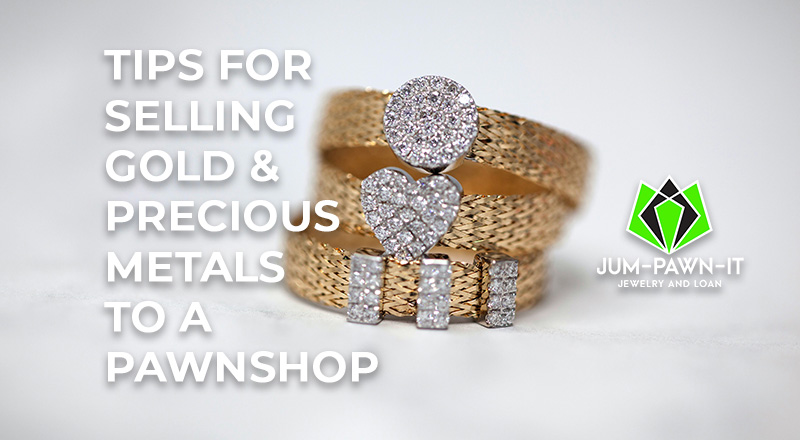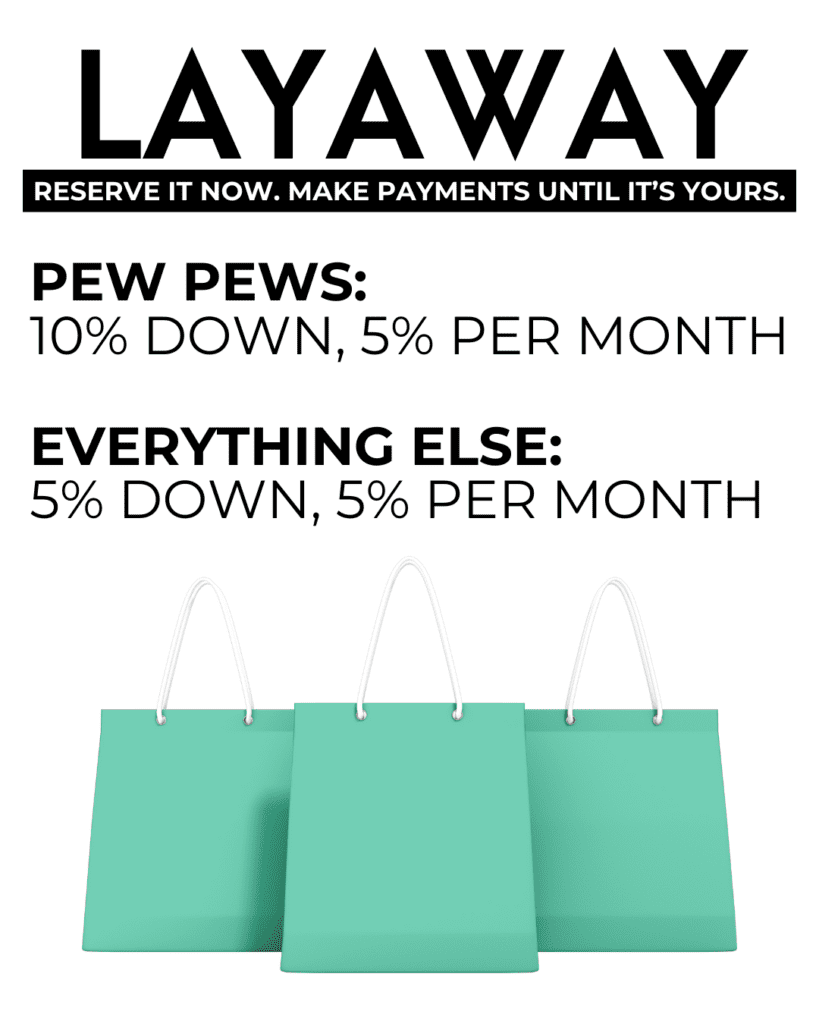Why Sell to a Pawnshop
Frankly put, a pawnshop is one of the best ways to get fast, hassle-free cash. There is little effort when selling gold to a pawnshop other than showing up with the piece and being ready to make a deal. Although we may be biased, we highly suggest considering a pawnshop when decided to offload some of that old jewelry.
What kind of gold will a pawnshop take?
Without making things too difficult, a pawnshop will take about anything that is made of gold. This can be jewelry, a golden figure, or anything else made of gold. With that, a pawnshop would not take anything that is gold-plated, due to being such a small amount of gold that it roughly is not worth anything. Another thing that is gold that a pawnshop would not take is gold cables, these are usually plated and it is not possible to tell how much gold is actually in the cable.
On the other hand jewelry, all shapes, sizes, and even conditions are accepted, from a brand new shiny ring to a broken chain–yes you read that right, a broken chain would be accepted, and honestly, the best thing to sell to a pawnshop due to the fact that they would likely give you more than a private seller would.
How to determine your gold’s value?
Gold’s value is a pretty simple affair to assess. This is basically finding out how pure it is, how much it weighs, and the current market value. Once these numbers have been found out, then you can use them to calculate the current price of that gold. This price usually brings back the current melt value, which is roughly the number that a pawnshop starts at when it is calculating gold value.
- purity
Most of the time, gold is not solid gold. There are many reasons for this, one being that gold is not as strong as other metals, so alloys are added to make sure that gold objects can withstand daily wear and use. Another reason for this is that some vendors want to save cost when making gold items, and of course, this comes with some items being old gold-plated, which is essentially valueless.
| Karat | Purity |
| 24k | 99.99% |
| 22k | 92.6% |
| 21k | 87.5% |
| 20k | 83.3% |
| 18k | 75% |
| 15k | 62.5% |
| 14k | 58.5% |
| 12k | 50% |
| 10k | 41.7% |
| 9k | 37.5% |
| 8k | 33.3% |
| 6k | 25% |
- weight
Aside from the purity, the biggest factor in gold’s value is the weight. This is for obvious reasons: more weight means more gold. There are many ways to measure the weight of gold. Here at Jum-Pawn-It we use pennyweights (.dwt), but other places may use grams or even oz. Pennyweights are a unit of mass that is equal to 24 grains, 1⁄20 of a troy ounce. The reason we use pennyweights here is that……………….
- market value
The last factor to consider when determining how much your gold is worth is the current market value. Like bitcoin or stocks, gold’s value is always changing, but overall pretty stable. It would be impossible to list the value of the gold in this blog because the value changes from time to time, but the price of gold is constantly being changed.
Gold price by GoldBroker.com
How does a pawnshop test gold purity and weight?
First thing that is important to mention here is that if a pawnshop doesn’t weigh your jewelry in front of you, out in the open, then they are pretty suspicious. Testing should also be done within the customer’s view. Basically, when bringing jewelry or precious metals to a pawnshop, the pawn broker will first test the item by scratching a tiny amount onto a block (this does not hurt your item, do not worry) and then pouring acid on that scratch to determine the karat.
Some tips when selling gold to a pawnshop
- know the market value
Now that you have seen the above graph, this should be a simple task. In other words, just check that graph, or one like it before visiting the shop to trade your gold for cash. Knowing the market value of gold will help you determine a fair price for your jewelry or item. That said, remember that most gold is a alloy so a gold ring that is one ounce doesn’t completely equal one once of actual gold.
- Know the facts and the math
This one is really just piggybacking on knowing the market value’s point that gold is not usually pure gold. Specifically, you should know the karat, so you can do the appropriate math to find out how much gold you have, for example, a 2 ounce 12k ring is 1 ounce of gold since 12k is 50% gold and 50% other alloys. Other than that math, assessing the actual value gets a little more complicated but a good pawnbroker would be happy to walk you through the numbers.
- Be ready to haggle/make a deal
Although there’s not a lot of room on gold and precious metals (like other items sold or pawned), you should always be ready to make a deal.We generally suggest that you show up knowing how much you want and then figure out what it is all worth. But, even more importantly, it is important to point out that asking for a lot on your grandmother’s ring because it may hold some sentimental value does not mean that a pawnshop can pay more because of that emotional connection, we can only pay for the actual precious metals.
Find a highly rated, local pawnshop
This tip is probably something that you already do when scouting out new sushi spots or local bars. Check reviews, especially google reviews. as we find that are most used and current. Look for a pawnshop that seems to care about its community and service. We will also point out that pawnshops always get some negative reviews from people who think their ring was real, and we had to tell them it wasn’t, for example. So be sure to read a few and don’t focus on only the bad ones unless they are specifically pointing out poor service or rudeness.
Conclusion
Pawnshops can be a great way to clean out the old jewelry drawer, offload some inherited jewelry, or just straight up make extra cash. Before making the trip to the local pawnshop to sell off those precious metals and diamonds, do some research, know what you expect to get, and be ready to haggle. Most pawnbrokers these days are polite and caring people who are trying to make it in this wild world as well, so treat them with respect and it will be recipricated–gone are the days of the gruff and grumpy old man sitting behind metal bars.





